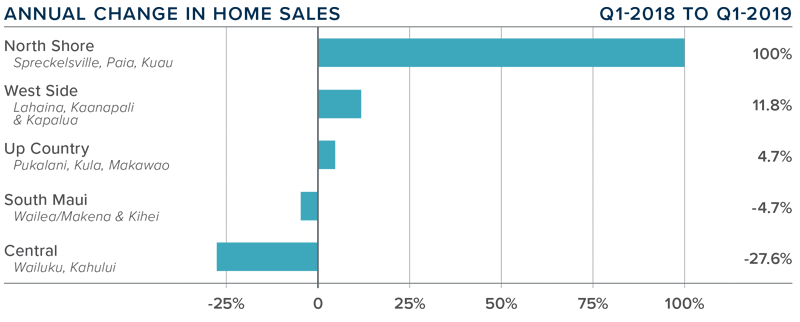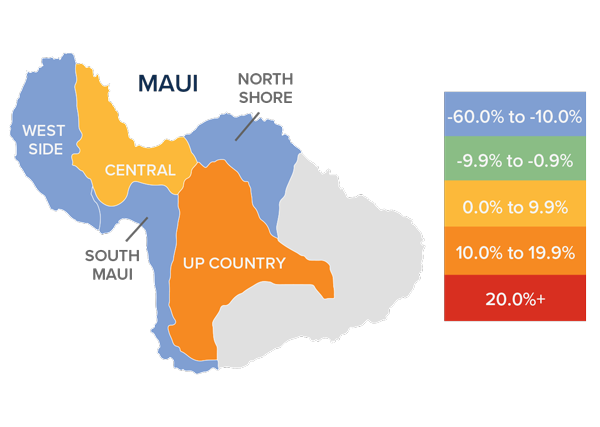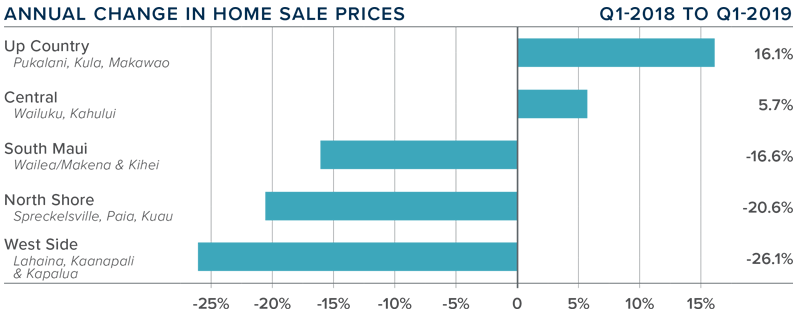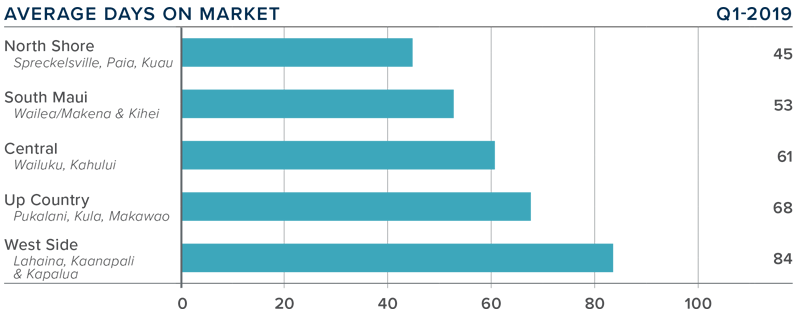The following analysis of select Maui real estate markets is provided by Windermere Real Estate Chief Economist Matthew Gardner. We hope that this information may assist you with making better-informed real estate decisions. For further information about the housing market in your area, please don’t hesitate to contact your Windermere agent.
ECONOMIC OVERVIEW
Hawaii’s economy continues to add jobs, but the rate of growth remains tepid. Over the past 12 months, the state added 3,200 new jobs, representing a growth rate of .5%. This lackluster growth may be due to the fact that the unemployment rate was a very healthy 2.7%.
On Maui, employment growth dropped 2.2% year-over-year, and has been contracting for the past 14 months. Even with this drop in employment, the unemployment rate was a healthy 2.8%, up from 2.2% a year ago. The unemployment rate may remain low, even given job losses, as the labor force continues to grow smaller. It is also worth noting that there are almost 3,600 job openings on Maui.
HOME SALES
- In the first quarter of 2019, 490 homes sold—a drop of 7.4% compared to the first quarter of 2018.
- Three markets saw growth in sales over the first quarter of 2018: North Shore, the West Side, and Up Country. There was a significant decline in sales in the Central area.
- The contraction in sales came as inventory levels dropped 7.3%. Three market areas saw listing inventories rise: Up Country, the Westside, and the Central area. Lower inventory levels were seen in South Maui and North Shore.
- Pending home sales in the quarter were down 5.8% from a year ago but up 16% from the fourth quarter of 2018, suggesting that second quarter closings may be more positive.

HOME PRICES

- The average home price in the region dropped 9.9% year-over-year to $824,955.
- Affordability is a significant issue on Maui, where average home prices in areas like Westside and Up Country are now above $1 million. I’m hopeful the recent drop in interest rates will stimulate more buyers. It’s worth noting that jumbo loan interest rates are also very competitive, which may help the higher-end markets.
- Although the region saw an overall drop in average home prices, the Up Country area experienced an increase of 16.1%. One additional area saw prices rise year-over-year, while prices dropped in the remaining three markets.
- Even given affordability constraints in many Maui market areas, I anticipate we will see home prices rise in 2019, though at fairly modest rates.

DAYS ON MARKET
- The average number of days it took to sell a home on Maui dropped two days compared to the first quarter of 2018.
- The amount of time it took to sell a home dropped in two markets: South Maui and the Westside. Market time rose in the rest of the markets.
- In the first quarter, it took an average of 62 days to sell a home. The fastest-moving market was North Shore and the slowest was the Westside.
- The drop in days on market suggests a healthy demand for housing, despite the slowing pace of home sales. I anticipate we will see modestly rising activity as we move through 2019.

CONCLUSIONS
 This speedometer reflects the state of the region’s real estate market using housing inventory, price gains, home sales, interest rates, and larger economic factors.
This speedometer reflects the state of the region’s real estate market using housing inventory, price gains, home sales, interest rates, and larger economic factors.
For the first quarter of 2018, I have moved the needle a little more in favor of buyers but the market is not yet at equilibrium, even given the drop in sales and lower home prices. Though the market is in need of more inventory, I remain positive about the longer-term outlook for home prices and demand on Maui.
 As Chief Economist for Windermere Real Estate, Matthew Gardner is responsible for analyzing and interpreting economic data and its impact on the real estate market on both a local and national level. Matthew has over 30 years of professional experience both in the U.S. and U.K.
As Chief Economist for Windermere Real Estate, Matthew Gardner is responsible for analyzing and interpreting economic data and its impact on the real estate market on both a local and national level. Matthew has over 30 years of professional experience both in the U.S. and U.K.
In addition to his day-to-day responsibilities, Matthew sits on the Washington State Governors Council of Economic Advisors; chairs the Board of Trustees at the Washington Center for Real Estate Research at the University of Washington; and is an Advisory Board Member at the Runstad Center for Real Estate Studies at the University of Washington where he also lectures in real estate economics.
 Facebook
Facebook
 X
X
 Pinterest
Pinterest
 Copy Link
Copy Link



